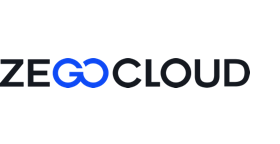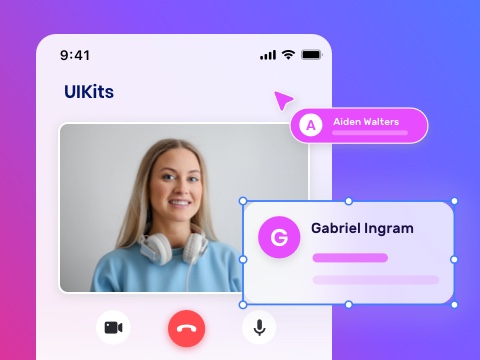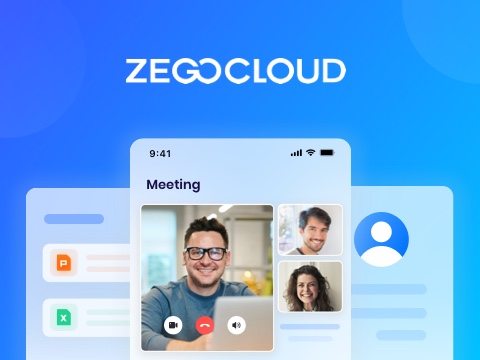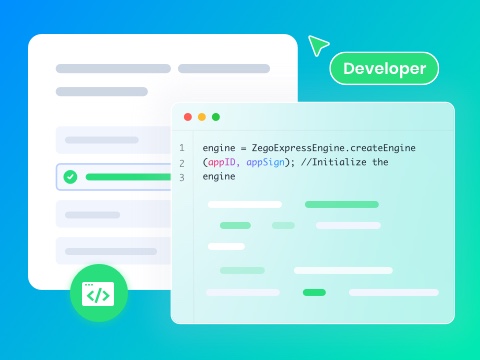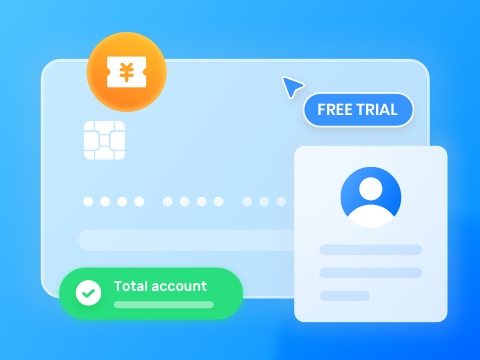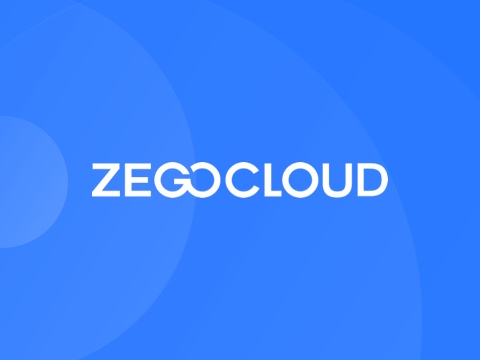Freshers looking to start their careers as Flutter developers need to have a basic knowledge of the different terminologies and problems associated with this platform. Before appearing for the interview, they should analyze and study these common interview questions so Flutter developers can gain the right confidence. Even if you are an experienced developer, you should read this article, as we have also listed some Flutter interview questions for your help.
Flutter Interview Questions for Freshers
Developers preparing for an interview for their first job as a Flutter app builder should prepare some practice questions. After thorough research, we have compiled a list of Flutter developer interview questions that most interviewers ask from a fresh developer. So, review the answers to these questions to ensure you are ready to hop onto this job opportunity.
Question 1. What do you know about Flutter as a fresher in the development field?
While answering this Flutter interview question, you can tell the interviewer that it is an open-source UI development toolkit created by Google. Moreover, developers use Flutter to build Android, iOS, and other operating systems applications from a single codebase. With its ability to build natively compiled applications, this platform develops a consistent and smooth user experience across different platforms.
Question 2. Tell us about your knowledge related to the core components of this platform.
As a fresher, you need to have a firm grip on the components of this development toolkit. You can handle this Flutter developer interview question by discussing the following elements:
- Flutter Engine: The engine is a portable runtime for hosting Flutter applications, and this component is primarily written in C++.
- Dart Programming Language: Flutter uses Dart, an object-oriented language that focuses on front-end development to create web and mobile apps.
- Widgets: Everything in Flutter is a widget, from the layout structures to the visible UI components.
- Foundation Library: This library also represents a collection of utility functions, classes, and constants that provide basic building blocks for Flutter applications.
- Plugins and Packages: Moreover, Flutter has a rich ecosystem of plugins and packages available on pub.dev. Apart from that, these plugins extend the capabilities of applications, such as accessing native device features.
Question 3. Is it necessary to learn the Dart language as a Flutter developer?
Yes, learning Dart is essential for becoming a full-time Flutter developer. When answering this interview question for a Flutter developer, you also need to mention that this primary language provides seamless integration with its libraries and tools.
Other than that, it offers modern features, such as strong typing and async-await, which are crucial for building apps. Developers can also benefit from the support Dart provides for Flutter’s hot reload feature to enhance the development experience.
Question 4. Can you tell us about the role of widgets in Flutter?
When talking about these elements, you can say that widgets are the fundamental building blocks of a Flutter application. They describe the structure of your user interface, defining elements such as the layout, images, and interactions. While having a Flutter interview questions and answers session, you can also detail the role of widgets as follows.
- Structure: Generally speaking, these elements provide the structure of the app, as well as the organization and management of the layout.
- Styling: Other than that, these widgets can define the appearance and styling of UI elements. For this purpose, widgets like images allow you to specify colors and other visual properties.
- Interactivity: Widgets handle user interactions, such as gestures and inputs. In addition, widgets, including TextField and Button, enable you to capture and respond to user actions.
Question 5. Talk us through the different build modes that are available in Flutter.
Developers looking for the answer to this common Flutter interview question can explain the following three build modes in front of the interviewer.
- Debug Mode: When talking about this mode of Flutter, you can say that its major use is in during the development process. Moreover, it enables hot reload and hot restart to let you make changes to the code and see the results instantly without losing the app state.
- Profile Mode: As this mode is used for performance profiling, it allows profiling tools to measure app performance, such as CPU and memory usage. Besides that, this mode provides a more accurate representation of how the app will perform in release mode.
- Release Mode: After utilizing previous modes, developers use this particular mode to deploy the app to production.
Question 6. Do any popular applications utilize Flutter?
Yes, several popular apps are built using this development toolkit, showcasing its versatility and performance capabilities. To improve your answer to this Flutter developer interview question further, you can list these apps as follows.
- Google Ads
- Alibaba
- Tencent
- Reflectly
- BMW
Question 7. Explain the advantages of using Flutter for app development.
While explaining the answer to this interview question for a Flutter developer, you can mention the following benefits to impress the interviewer.
- Cross-Platform Development: First, talk about Flutter’s ability to let developers write one codebase that runs on both iOS and Android. Moreover, you can mention the consistent look and feel across different platforms without the need for platform-specific adjustments.
- Fast Development: Fresh candidates can also mention its hot reload feature that allows developers to see changes in real-time without restarting the app. Apart from that, they can talk about a wide range of customizable widgets that simplify UI design.
- High Performance: Other than that, Flutter compiles native ARM code, which allows for high performance similar to native apps.
- Support: As a Google-supported framework, Flutter benefits from continuous updates, improvements, and strong community backing.
Question 8. How will you explain different types of widgets in Flutter?
Interviewers can ask this during the Flutter interview questions and answers session to test your knowledge. To pass their test, you need to explain the following types in detail while answering.
- Stateless Widget: When talking about this type, you will need to explain that it does not hold any state. Apart from that, it is immutable, so developers cannot change this widget once it is built. Moreover, you can provide examples, including text, icons, and images.
- Stateful Widget: For this widget type, candidates can mention that they hold a state and can change during the app’s lifecycle. They can also put forward some examples, such as checkbox, slider, and any custom widget requiring dynamic behavior.
Question 9. Why do developers take so much time to build a Flutter app?
As the process is complex, developers take time to build a Flutter app due to the need to handle complex features, custom UI designs, and backend integrations. Apart from that, comprehensive testing and debugging are essential to ensure app stability and performance across different devices which may take time. The learning curve for those new to Flutter, along with managing app state and optimizing performance, also contributes to the timeline.
Question 10. Can you name some of the best editors for Flutter development?
There are many advanced editors available all having their unique strengths and weaknesses. You can demonstrate your knowledge to the interviewer by mentioning the following editors while answering this Flutter interview question.
- Visual Studio Code
- Android Studio
- IntelliJ IDEA
- Neovim
- Xcode
Flutter Interview Questions for Experienced
A seasoned Flutter developer looking to upgrade to a better job needs to have knowledge of advanced terminologies and processes for this platform. Interviewers judge an experienced candidate applying for a senior-level role to test their suitability for the position. Therefore, read these Flutter interview questions and answers for experienced candidates to prepare for your dream job.
Question 1. How do you diagnose and resolve performance issues in a Flutter application?
As an experienced developer, you should detail all the steps you need to take while answering this Flutter technical interview question. So, read the following points to prepare yourself to explain the detailed process.
- Performance Issues: Start the process using Flutter’s built-in tools, such as Flutter DevTools, which provide insights into CPU, memory usage, and frame rendering times. For this purpose, developers also need to pay attention to user feedback regarding slow or laggy interactions.
- Common Performance Bottlenecks: After identifying the cause of the performance issue, optimize the widget builder using “const” constructors. In addition, you should look to minimize unnecessary widget rebuilds using “setState” judiciously. Other than that, simplify complex layouts and reduce the depth of nested widgets.
- Optimization Techniques: Upon simplifying the interface, utilize “ValueKey” to preserve stateful widgets. Apart from that, developers can implement lazy loading for data and assets to improve startup time and reduce memory usage.
- Testing and Profiling: As we know, performance characteristics can vary between devices, so testing on multiple real devices is crucial. Besides that, developers can automate performance tests to detect regressions in performance over time.
Question 2. Why do developers pass functions to widgets?
While answering Flutter interview questions and answers for experienced developers, you need to put forward technical answers to demonstrate your knowledge. For this purpose, a senior candidate should provide details on the following reasons.
- Handling User Interactions: By passing callback functions to widgets, you can define what action should be taken when an event occurs.
- Managing State: In Flutter, when state changes in one widget need to affect another widget, passing callback functions allows child widgets to notify their parent widgets about state changes.
- Flexibility in Logic: Other than that, passing functions allow widgets to behave dynamically based on conditions or user input.
Question 3. Discuss the use of “RepaintBoundary” and how it affects the performance of a Flutter app.
As a senior developer, you must answer this Flutter interview question by explaining that “RepaintBoundary” in Flutter is used to optimize the rendering performance. Moreover, this element creates a boundary around a widget subtree, preventing unnecessary repainting of widgets when only parts of the subtree need updating.
Other than that, you need to mention that it is beneficial when a subtree contains complex widgets or animations that don’t need to be repainted on every frame. When talking about its impact, you should mention that this element reduces CPU and GPU usage by minimizing the number of widget repaints, improving overall app performance.
Question 4. What do you know about the difference between “Double.INFINITY” and “MediaQuery?”
Experienced developers should answer these interview questions for Flutter developers by comparing both these elements in detail. They should mention that “Double.INFINITY” in Flutter represents positive infinity, a numeric value that is greater than any other double value. On the other hand, “MediaQuery” in Flutter is a utility that provides information about the current app’s dimensions and configuration.
Apart from that, it provides access to properties like screen size, orientation, and safe area insets to enable responsive design on device characteristics. In essence, “Double.INFINITY” shows a constant representing a numeric concept, while MediaQuery provides contextual information about the device’s screen and layout.
Question 5. When should a developer use “mainAxisAlignment” and “crossAxisAlignment?”
Answering this Flutter interview questions and answers for an experienced candidate, you should know that these properties control how a row and column widget aligns with their children depending on the choice.
- mainAxisAlignment: Aligns children along the central axis (Horizontal for Row, Vertical for Column).
- crossAxisAlignment: Places children along the cross axis (Vertical for Row, Horizontal for Column).
So, you can use them to achieve desired layouts like centering elements, placing them at the start or end, or spreading them evenly.
Question 6. Explain the “AnimationController” class and its role in creating complex animations in Flutter.
When responding to this Flutter technical interview question, you should explain that “AnimationController” acts as the conductor of your animation. With its advanced functionality, it manages the playback and progress of the animation of your app. Using this property, you can also set the total time the animation should take to complete.
For complex animations, this element creates animations for different properties, such as scale and opacity, and combines them using “AnimationController.drive.” Therefore, you can think of it as the core that drives and coordinates your animations for a smooth user experience.
Question 7. Talk about the list of responsibilities of FlutterActivity.
An experienced Flutter developer will surely know the answer to this Flutter technical interview question. However, they need to keep in mind the position they are applying for and justify the answer with the technicalities.
- Displaying the Launch Screen: It manages the initial Android launch screen before the Flutter UI loads.
- Configuring the Status Bar: FlutterActivity allows you to customize the appearance of the status bar, such as battery and signal, to seamlessly blend with your Flutter app’s design.
- Choosing the Initial Route: A multi-page Flutter app, can define the initial route that will be displayed when the app launches.
- Optional Transparency: Other than that, it offers the option to render the Activity itself transparent, allowing the Flutter UI to completely fill the screen.
Question 8. Do you know about the common operators utilized in the Dart language?
This Flutter interview question will test your technical knowledge of the Dart language. Therefore, you have to mention all the following operators to impress your interviewer.
- Arithmetic Operators (+, -, *, /, ~/): Perform basic arithmetic operations.
- Relational Operators (==, !=, <, >, <=, >=): Compare values and return boolean results.
- Type Test Operators (is, as): Check the type of an object and potentially cast it to a specific type.
- Conditional Operator (?:): Shorthand for conditional expressions.
- Logical Operators (&& (AND), || (OR), ! (NOT)): Combine boolean expressions.
Question 9. Why do developers require separate directories for iOS and Android in Flutter?
A seasoned developer should talk platform-specific code while answering this Flutter interview questions and answers for experienced candidates. As you know, each platform has its programming language, UI frameworks, and functionalities. So, developers need to place these platform-specific parts in separate directories to avoid cluttering the main codebase.
You also need to mention that developers apply this method to access native device features like cameras and sensors, requiring platform-specific code. These functionalities are implemented in the respective directories using languages like Swift (iOS) or Kotlin (Android).
Question 10. Describe the best way to utilize the gesture recognition system of Flutter to detect user input.
To test your technical knowledge, the interview will dig deep into the complex processes associated with Flutter development. So, demonstrate your expertise by answering this Flutter interview question and talking about the functionality of this system. You should explain that Flutter’s gesture recognition system includes a variety of pre-defined gestures, such as tap, drag, and scale.
All such gestures enable the applications to detect and respond to user input. To listen for gestures, developers can use the GestureDetector widget, and handle “tap” events specifically with the “GestureDetector.onTap” method. Other than that, you can create custom gestures by sub-classing the “GestureRecognizer” class.
Enhancing Flutter Applications with ZEGOCLOUD for Superior Real-Time Communication
In the rapidly evolving world of app development, delivering seamless and efficient real-time communication is essential. For developers leveraging Flutter, integrating a robust communication platform can greatly enhance the functionality and user experience of their applications. ZEGOCLOUD, with its powerful real-time communication solutions, emerges as a superior choice for Flutter developers looking to elevate their apps.

Why Choose ZEGOCLOUD for Flutter?
1. Easy Integration: ZEGOCLOUD offers a well-documented SDK that is easy to integrate into any Flutter project. This means less time wrestling with complex integration processes and more time focusing on creating outstanding app features.
2. High-Quality Real-Time Communication: Whether it’s video, voice, or chat functionalities, ZEGOCLOUD provides high-quality communication solutions that are crucial for today’s interactive applications. This quality ensures that your app remains competitive in markets where users expect flawless and immediate communication capabilities.
3. Scalability: One of the greatest challenges in Flutter app development is scaling as user numbers grow. ZEGOCLOUD’s infrastructure supports scaling effortlessly, accommodating a growing user base without degrading the app’s performance.
4. Global Reach with Low Latency: For apps that cater to a global audience, ZEGOCLOUD offers low-latency communication solutions across the globe. This is crucial for maintaining a smooth user experience, regardless of geographic distances.
5. Enhanced Security: ZEGOCLOUD provides end-to-end encryption for all communications, ensuring that every interaction within your Flutter app is secure from unauthorized access.
Integrating ZEGOCLOUD with your Flutter application not only enhances real-time communication capabilities but also adds a layer of professionalism and reliability that users value. As the demand for interactive features continues to grow, having ZEGOCLOUD as your RTC partner ensures that your app remains at the forefront of innovation and user satisfaction.
By choosing ZEGOCLOUD for your Flutter applications, you’re not just enhancing communication; you’re building pathways to better user engagement and retention, paving the way for success in the competitive app development arena.
Conclusion
Staying updated with the most relevant Flutter interview questions is crucial for candidates aiming to excel in this field. This collection of 20 common questions and answers serves as a comprehensive guide to prepare you effectively. Whether you’re a new developer or looking to advance your skills, mastering these questions can significantly boost your confidence and increase your chances of success in any Flutter-related job interview. Keep practicing, stay curious, and continue to expand your knowledge base to remain competitive in the rapidly evolving world of Flutter development.
Read more:
Let’s Build APP Together
Start building with real-time video, voice & chat SDK for apps today!
